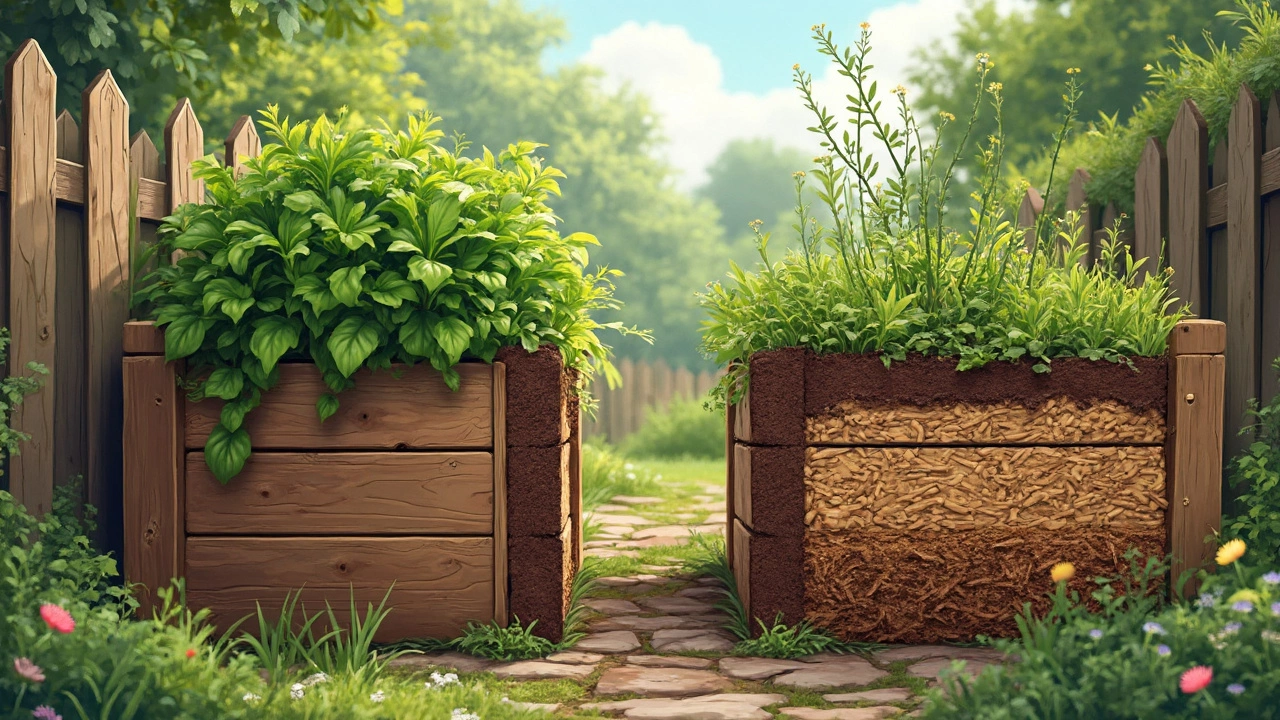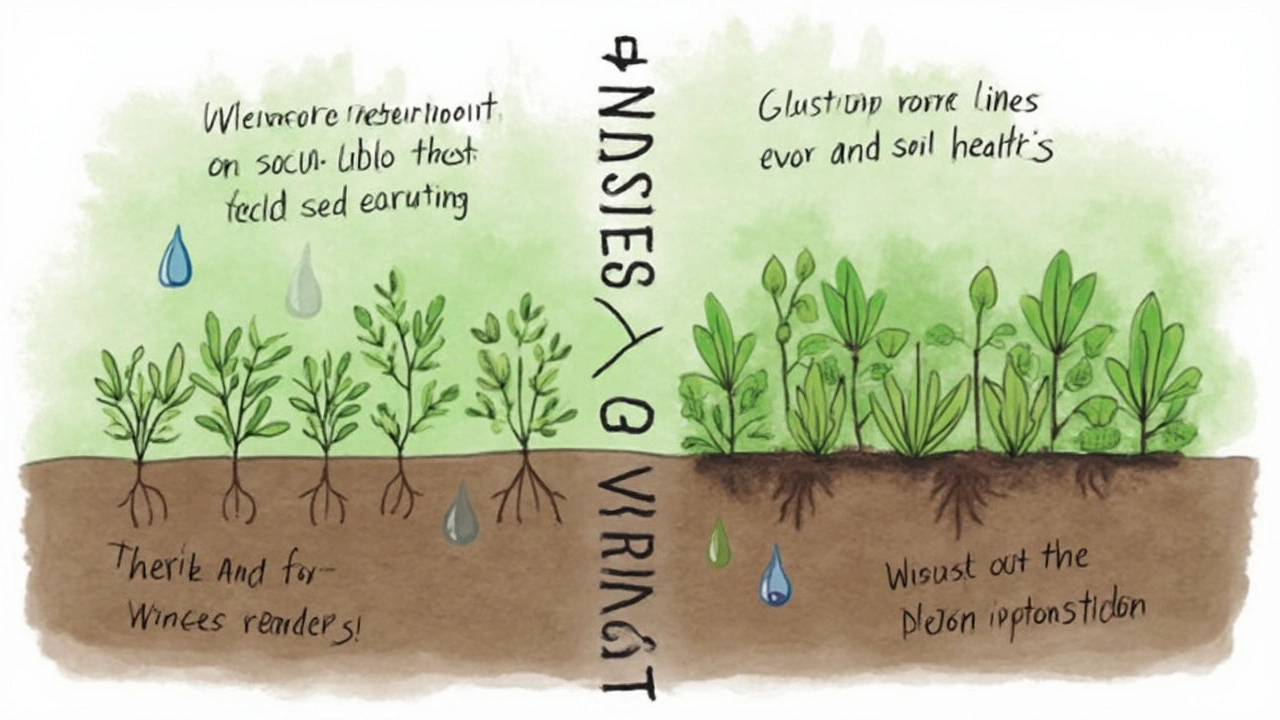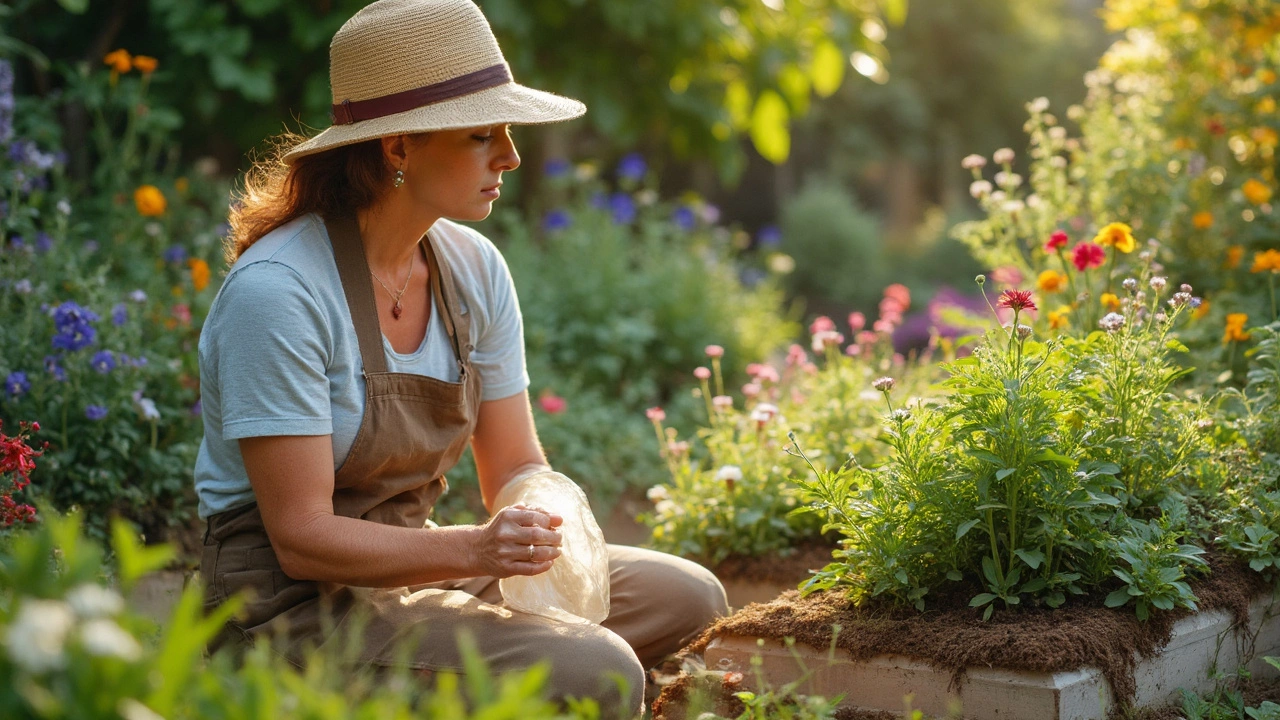Thinking about using plastic in your raised garden bed? This might seem like a simple decision, but there’s more to think about than you might realize. On the upside, plastic lining can help keep your soil moist and block out those pesky weeds. It’s like giving your garden a little protective shield. But where there’s good, there might be some not-so-good too.
One thing to consider is how plastic affects soil health. We're all about that rich, thriving soil for our veggie patches, right? Well, plastic can sometimes mess with drainage and air flow. This could lead to issues in the long run, especially if you're aiming for organic or sustainable gardening practices.
- Understanding Plastic Benefits
- Potential Drawbacks of Plastic
- Types of Plastic for Garden Beds
- Alternative Materials to Consider
- Making the Best Choice for Your Garden
Understanding Plastic Benefits
Alright, let’s dive into why you might want to line your raised garden bed with plastic. At its core, plastic acts like a protective barrier, helping to keep your soil where it belongs, especially if you’re using a raised bed on a deck or patio. No more soil spills when you water; a neat and tidy solution!
Another perk is moisture retention. When you line your bed with plastic, it effectively helps in reducing water evaporation. That means your plants can get the moisture they crave without you needing to water them every single day. This is particularly handy in hotter climates where the sun can dry out soil pretty quickly.
Plastic also serves as a great weed barrier. By blocking light, it hinders weed seeds from sprouting and spreading, giving your plants more room to grow without competition. Plus, it means fewer hours spent pulling weeds which, let's face it, isn’t anybody’s favorite gardening task!
This lining can also provide some pest control. If the material is thick enough or paired with a mesh, it can deter some of those burrowing critters that love to nibble on roots.
So the benefits can be quite appealing, creating a neat, efficient, and hassle-free growing space for your plants right in your raised garden bed.
Potential Drawbacks of Plastic
While adding plastic to your raised garden bed might seem practical, it's worth knowing the possible downsides. First off, plastic can restrict water drainage if not applied correctly. This might cause water to pool at the bottom, making roots soggy and unhappy. You don't want your plants getting waterlogged, right?
Another biggie is the effect on soil aeration. Plants need to breathe just like we do. Plastic can limit the air circulation around roots, and this might cause your plants to struggle over time. And here's something else: Certain plastics might break down over time, releasing chemicals into the soil. Ever wondered if the type of plastic you’re using is safe for growing food?
Oh, and speaking of soil health, worms and other critters that are beneficial for soil can be turned off by plastic barriers. These little guys are doing a tough job breaking down organic matter and helping roots. You don't want to scare them away.
Plus, consider the longevity factor. While plastic might last a while, it will eventually degrade or tear, and then you’re stuck cleaning up bits of it. This is not just a hassle but can raise concerns about plastic waste in your garden environment.
Got sunlight? Well, it can cause the temperature under the plastic to heat up. This can mess with your soil’s natural ecosystem and even bump up your soil's temperature to levels that are not great for plants. So while plastics can be helpful, these considerations are key to keeping your garden soil health in check.

Types of Plastic for Garden Beds
So, you've decided to go with plastic for your raised garden bed. But wait, what kind of plastic are we talking about here? Yep, not all plastic is made equal, and choosing the right type can make a world of difference for your garden.
First up, we have polyethylene. It’s one of the go-to choices. This type is pretty common because it’s durable and does a decent job at holding soil moisture. You’ll often see it in black or white variations. The black stuff is great for warming up the soil a bit, while the white can reflect heat away if things get sweltering. But, there's a catch—make sure it’s UV treated so it doesn’t crumble after a sun-filled summer.
Polypropylene is another option you might bump into. This one’s a bit more breathable than polyethylene, which can help with keeping the ground from becoming swampy. It’s typically used in weed barriers because it allows water to flow through while still providing a good cover against the unwanted greenery.
Then there's polyvinyl chloride (PVC). You might see people using PVC pipes to create sturdy frames for their beds. However, using it as a liner is less common due to concerns over chemicals leaching into the soil. It’s a bit of a double-edged sword—it's robust, but not always eco-friendly.
| Plastic Type | Durability | Water Permeability | Eco-friendly? |
|---|---|---|---|
| Polyethylene | High | Low | No |
| Polypropylene | Medium | Medium | No |
| PVC | Very High | Low | Not typically |
The key is to pick a plastic that suits your local climate and gardening goals. Always ask yourself—do I want more moisture retention, or better drainage? And remember, go for food-safe materials that won't harm your plants—or the people eating them!
Alternative Materials to Consider
If you feel like skipping the plastic lining in your raised garden bed, no worries! There are plenty of other options that can work just as well, if not better. Let's dig into some alternatives that keep your garden happy and healthy without the downsides of plastic.
First up, we've got landscape fabric. This stuff is fantastic because it allows air and water to pass through while still holding back pesky weeds. Plus, it doesn't degrade quickly, so you get plenty of bang for your buck.
Another popular choice is using untreated natural materials like burlap or jute. These are eco-friendly, let your garden breathe, and eventually break down to add organic material to your soil over time. It's a win-win!
Some folks go for good ol' newspaper layers or cardboard. While these might not last as long, they’re a great temporary fix. Think of them as a garden kickstart. They smother weeds effectively and eventually turn into compost.
- Landscape fabric - Allows water and air through, lasts longer than most options.
- Burlap or jute - Natural, biodegradable, and adds organic matter over time.
- Newspaper or cardboard - Cheap, effective against weeds, but short-lived.
By going for one of these alternatives, you’re not only thinking about your garden’s health now, but you’re also contributing to a more sustainable and eco-friendly planet. And who doesn't love that?

Making the Best Choice for Your Garden
Deciding whether to use plastic lining in your raised garden bed really boils down to your specific gardening goals. Do you want something low-maintenance, or are you ready to put in a bit more effort for the sake of better soil health?
If keeping moisture in is your top priority, a plastic liner might be helpful. They are great at stopping water from escaping, which means less time watering and more time enjoying your plants. On the flip side, some gardeners are worried about plastic affecting soil drainage, and potentially leaching chemicals over time, which could freak out any organic gardening enthusiast.
For those on the fence, there are other materials to consider. Landscape fabric, for example, allows for water and air flow while still providing a barrier against weeds. Some folks even use natural materials like newspaper layers or straw, which eventually decompose and benefit the soil—win-win if you're aiming for that organic touch.
- Use plastic lining if moisture retention and weed prevention top your list.
- Opt for alternatives like landscape fabric if you're concerned about soil health and eco-friendliness.
- Consider natural materials for an organic approach, they decompose and enrich the soil.
There's no one-size-fits-all answer, but knowing what each option brings will hopefully plant some seeds of clarity in making your choice. Whatever path you choose, making the right call for your garden starts with knowing what matters to you most, so you can create a thriving, enjoyable space.
| Material | Benefits | Drawbacks |
|---|---|---|
| Plastic Liner | Retains moisture, prevents weeds | May affect drainage, chemical leaching issues |
| Landscape Fabric | Allows water/air flow, blocks weeds | May require more maintenance |
| Natural Materials | Eco-friendly, decomposes to enrich soil | May need frequent replacement, less durable |
